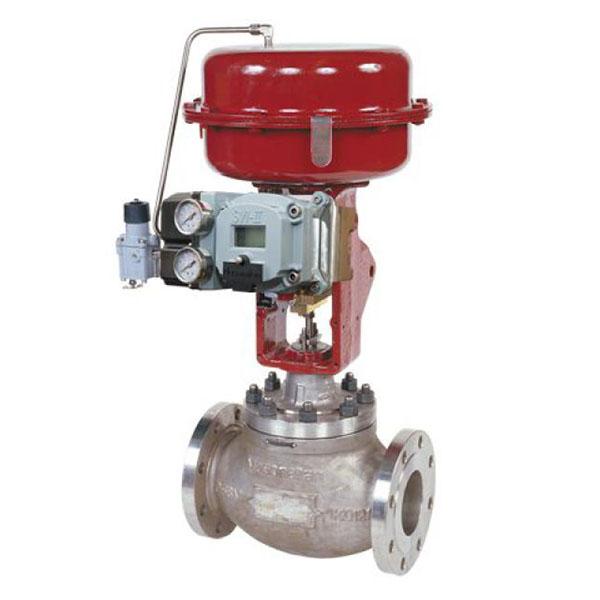Motorized control valves have become an essential component for precise automation and control in industrial processes across various sectors. Let us understand what motorized control valves are, their key components, applications and advantages over traditional valves.
What are Motorized Control Valves?
A motorized control valve is a valve that opens, closes, or regulates flow automatically through the use of an electric motor. It consists of a valve body, plug or disc, actuator and a position sensor. The actuator is an electric motor that opens and closes the plug or disc based on control signals. The position sensor provides feedback about the valve's current state.
Motorized control valves are designed for automated remote or local control in processes that require accurate regulation of fluid flow, pressure or temperature. The electric actuator allows precise positioning of the plug based on external control inputs like PLC/DCS signals or temperature/pressure readings. This makes motorized valves ideal for critical applications that demand repeatable automated operation with tight control.
Key Components of a Motorized Control Valve
Valve Body: The valve body forms the main structure and provides the channel for fluid flow. It has inlet and outlet ports.
Plug/Disc: The plug or disc is the movable part inside the valve body that regulates flow. It moves linearly or rotates to vary the flow area.
Actuator: An electric motor or pneumatic actuator provides power to position the plug. Linear actuators are commonly used in control valves for precise linear motion.
Position Sensor: Feedback devices like limit switches or potentiometers determine the plug position and relay it to the controller.
Control Module: It receives setpoint and feedback signals to modulate the actuator motion for accurate position control.
Common Applications of Motorized Control Valves
Heating, Ventilation and Air-Conditioning (HVAC): Used for temperature control in chillers, boilers and air handlers by regulating water/glycol flow.
Oil & Gas: Flow control of steam, gas, crude and other fluids in refineries, pipelines and production facilities.
Chemical Processing: Dosing and blending of chemicals, controlling reactor temperatures and pressures.
Power Plants: Boiler water level control, feedwater regulation, extraction control and circulation.
Pharmaceuticals: Precise control of media, reagents and product flows in bioreactors and mixing vessels.
Water & Wastewater Treatment: Flow modulation of treated water, chemicals and sludge in various plant processes.
Advantages over Conventional Manual Valves
Automated Operation: Motorized valves can be programmed to operate based on process variables without human intervention.
Repeatability: The actuator provides highly consistent positioning for a given control signal every time.
Control Accuracy: Close loop control using feedback achieves much finer control than manual operation. Can regulate flow within 1-2% of setpoint.
Plant Optimization: Automation enables better process optimization, performance monitoring and data collection for analysis.
Safety: Eliminates risks from manual operation in hazardous environments prone to leaks, overflows etc.
Energy Efficiency: Precise control minimizes waste from over/under dosing of utilities like steam or water.
Low Maintenance: Modern electric actuators are highly reliable and require less servicing than pneumatic versions.
In summary, motorized control valves have become indispensable for reliable and efficient process automation across many industries. Their self-actuating capability combined with precise feedback control delivers unmatched repeatability and accuracy in automated flow, pressure and temperature regulation applications.
Key Design Considerations for Motorized Control Valves
While motorized valves offer multiple advantages, careful consideration must be given to valve sizing, actuator selection and installation for optimal performance.
Valve Sizing: The valve size (diameter, Kv/Cv rating) should match the process flow requirements over the full range to prevent cavitation, turbulence or excessive pressure drops.
Actuator Sizing: Actuator torque must exceed the stall torque required by the application to overcome closing forces like high differential pressures.
Flow Characteristics: Valve characteristics like linear, equal percentage or quick opening should match the process control requirements.
Installation: Straight piping requirements upstream and downstream must be met. Valves must be installed vertically or horizontally as per design.
Position Feedback: Precision gearboxes or digital position transmitters help achieve tighter control accuracy within 1% of desired value.
Control Loops: PID control algorithms tuned for valve actuators stabilize loops and eliminate oscillations for smooth, ripple-free control.
Maintenance: Actuators should have self-lubricating bearings or seals to minimize wear. Easy access is needed for routine checks and repairs.
Process Variability: Actuators must be sized keeping margins to handle load fluctuations without stalling or hunting for setpoint.
With proper selection and installation following process engineering fundamentals, motorized valves deliver years of reliable efficient automation satisfying operational goals. Their benefits are driving broader adoption across industries worldwide.
Motorized Valve Technology Advancements
Valve manufacturers are continuously enhancing motorized valve technology to expand capabilities and deliver higher performance for evolving applications. Here are some key technology trends:
Digital Actuators: Smart digital actuators offer integrated diagnostics, position feedback resolution to 0.1% and plug scanning for predictive maintenance.
Fieldbus Networking: PROFIBUS, FOUNDATION Fieldbus and other industrial protocols enable distributed valve control from DCS and integration into IoT platforms.
Electric Actuators: Brushless DC and stepper motors provide maintenance-free positioning with IP67/NEMA 4X enclosures for hazardous areas.
Variable Speed Drives: VSDs modulate motor speed smoothly for soft starts/stops and improve process stability over on-off cycling.
Function Blocks: Pre-programmed function blocks help derive critical process variables directly from the valve for local PID control without DCS.
Valve Diagnostics: Health monitoring tools track actuator cycles, operating hours, component wear for preventive servicing before failures.
While pneumatic actuators still dominate some industries due to low initial costs, the advantages of digital electric actuators are driving increased use of motorized valves for precise process control across industries globally. With ongoing technological improvements focusing on performance, diagnostics and networking capabilities, motorized control valves will play an even more critical role in automating industrial processes efficiently and sustainably in the coming decades.
Get more insights on this topic: https://www.newsanalyticspro.com/motorized-control-valves-an-essential-component-for-automated-process-control/
Explore more information on this topic, Please visit: https://masstamilan.tv/automotive-parts-remanufacturing-an-environmental-friendly-and-cost-effective-solution/



